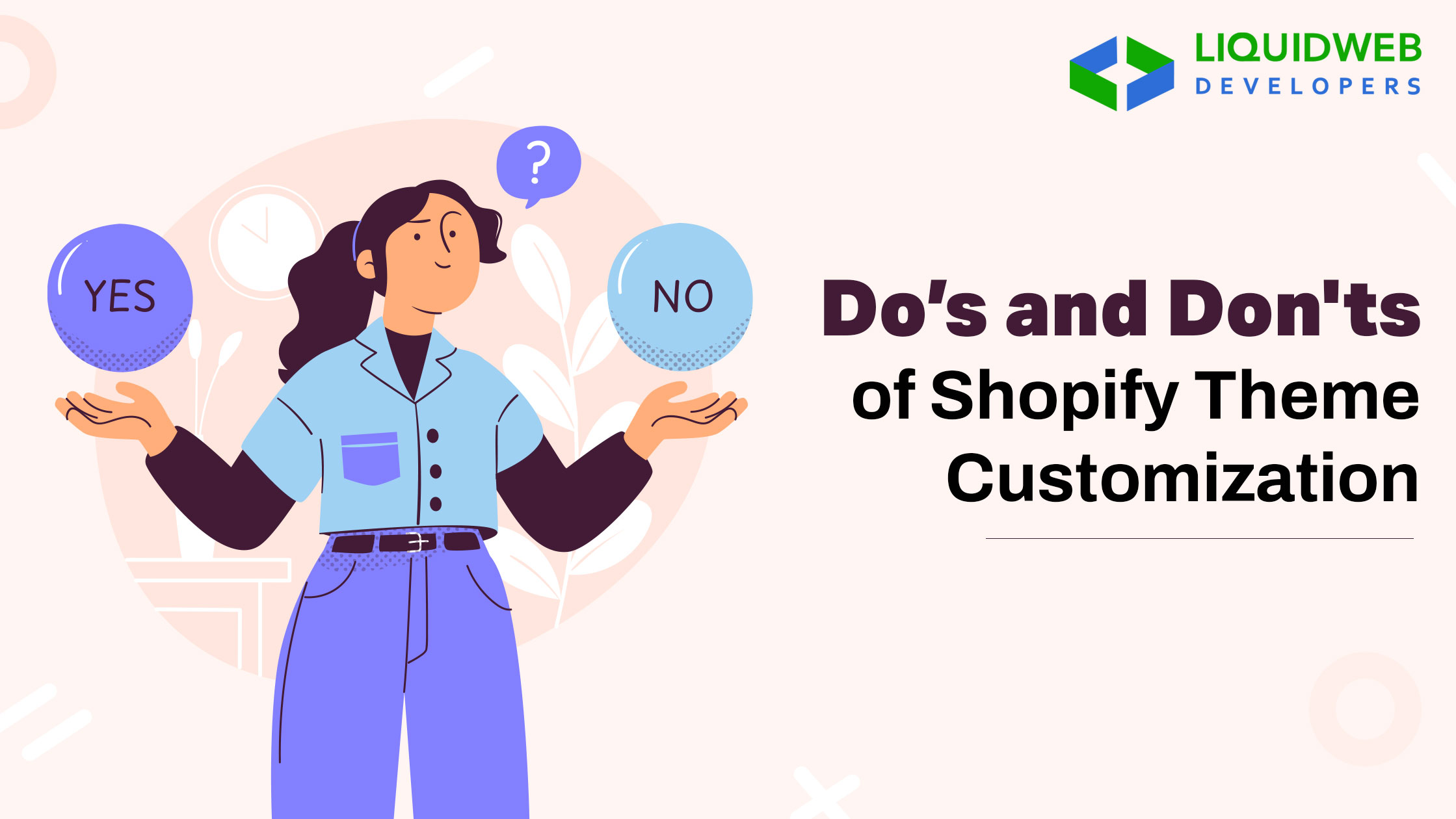Dos and Don’ts of Shopify Theme Customization

Shopify stores are built on customized Shopify themes. Customization is essential in providing the greatest possible experience for customers, as it controls the way it works, and looks, and allows users to browse and check out, among other things.
An e-commerce brand or business owner can use a Shopify theme as a template to decide on the style, layout, and functionality of their online store. Some are usually created by Shopify or Shopify partners, including developers and agencies; some are free, while others are paid.
Although Shopify themes have advantages, customizing them carries some risks. Therefore, let’s get started by reviewing the main dos and don’ts while customizing a Shopify theme to avoid any conflicts in running your store smoothly.
List of Dos for Shopify Theme Customization
Always Keep Theme Backup
Having multiple themes and theme duplication in your store does not slow down loading times or worsen the consumer experience, which is vital because of page speed. It’s a frequent misperception that a store’s page load performance may suffer by having multiple published themes. Making it a practice to frequently duplicate your theme before making changes will make debugging easier if later page speed difficulties arise.
Follow Robust Testing practices
The next crucial action you should take after making the required adjustments to your Shopify theme is to execute a test run. It will assist you in determining how the changes may impact the way consumers or visitors to your online store shop. You can even experiment with the graphics in your store.
It also entails verifying compatibility and functionality across various browsers and devices. Make sure your changes don’t cause the site to load slower. To assess and improve performance, make use of resources like Shopify’s integrated performance tools or Google PageSpeed Insights.
Consider Professional Help
Hire a Shopify theme customization services company or developers if you’re not comfortable with coding or if your customizations are intricate. Getting expert assistance guarantees that your theme is appropriately customized and fits your organization’s requirements. Shopify Experts can be found via referrals, reviews, or the Shopify Experts Marketplace.
Keep Responsiveness in Mind
Make sure your theme works well on mobile devices and is completely responsive. Try your theme across a range of devices and screen sizes. To adjust your CSS layout for varying screen widths, use media queries. Make sure that the content, pictures, and navigation all change appropriately.
Keep Track of Shopify Updates
Shopify regularly releases bug patches, enhancements, and new features for its platform. To make sure your theme is current and compatible, keep yourself updated about these updates. Check Shopify’s release notes and update logs regularly to learn about any changes that may impact the customization of your theme.
List of Don’ts for Shopify Theme Customization
Don’t Use Pirated or Third party Themes
Having a fully customized store is one of the main evolving needs of the customers. Customers look for stores where they can easily find what they are looking for. Easy navigation, advanced filters, and search options along with properly defined categories and product sections, attract your customers more.
However, to win the game of custom themes do not go for third-party themes which are not credible or can be pirated. Themes not meeting the legal requirements can adversely affect your SEO scores also and you can be the victim of penalties in the future.
Avoid Involving Multiple Hands
Every Shopify expert follows different strategies and styles to customize Shopify websites. When you incorporate multiple experts to handle a single thing that can be confusing and challenging to all involved Shopify developers. To achieve a desired and consistent output it is required that they all are on the same page. Otherwise, this can lead to a big disaster. Therefore while hiring shopify website development services, partner with an expert and experienced Shopify website design company that can manage your project mindfully.
Avoid Complicate the Payment Process
Payment completion is the last step of online shopping and you must satisfy a customer at this stage. Keep the payment completion section simple and easy by avoiding asking for unnecessary details.
Focus on integrating multiple payment methods to ease the customers. Add an SSL certificate to secure the payment transactions and build trust among your customers that their private data is safe with you.
Display clear and simple error messages to customers so they do not panic when the payment is incomplete or denied. Also, you do not need to add any custom code during payment gateway integration, and keep the UI intuitive and easy.
Summary
When designing a custom Shopify store you need to take care of certain things as we have already discussed above in this blog post to drive better results. Craft a well-planned business plan from idea to execution for setting up your store to offer maximum user experience.
Focus on customer retention rather than customer acquisition for long-term success. Have a deep understanding of what works and what does not work while running a Shopify store. You can consult with a reliable Shopify website design company to ensure that your store is perfectly customized to your business needs.
